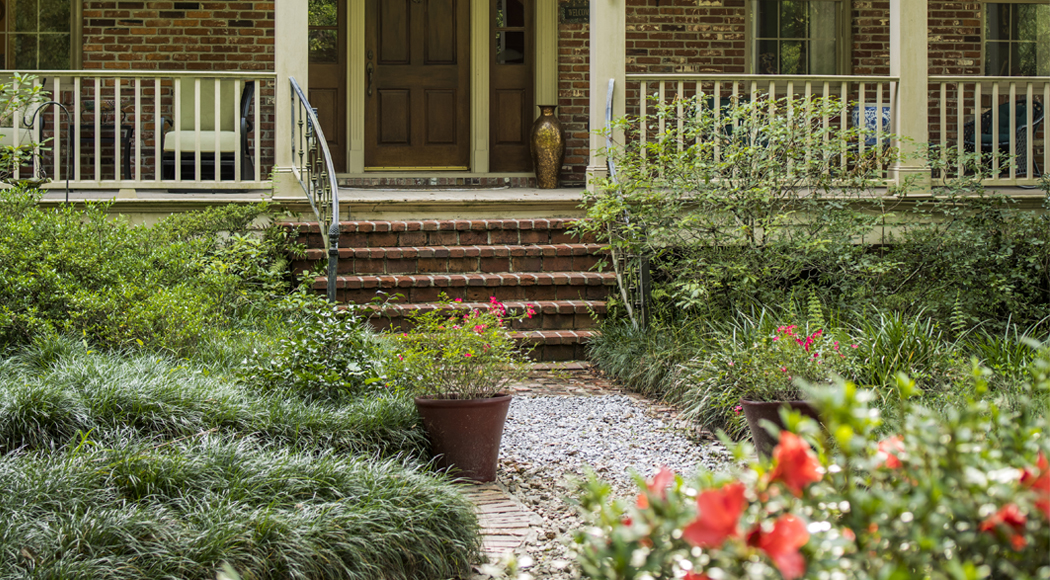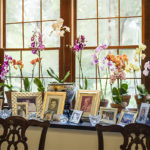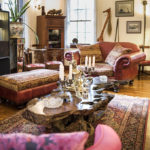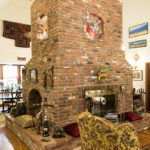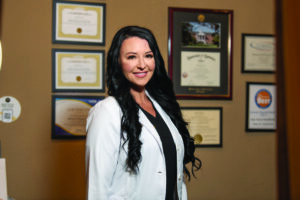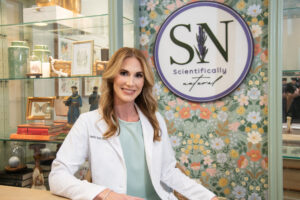Preston Marx and Sonia York are collectors. Of souvenirs, memorabilia, furniture and experiences. From the time you drive onto their five lush acres, the evidence is spread out before you. Azalea bushes surround the driveway and bromeliads line the parking pad. The colorful front patio garden offers a mere hint of what awaits you inside the house.
The couple’s home is the perfect backdrop to display the treasures they’ve accumulated during a lifetime of travels. Built in 1983, they bought the home in 2002 when Dr. Marx relocated from New York to Louisiana to chair the School of Public Health and Tropical Medicine at Tulane University. It was a full-circle moment for him, as he was born and raised in the Bywater area of New Orleans. Having been back in his home state for 15 years, he says he won’t live anywhere else again. Like most of us, this place is in his blood, and there’s no use fighting it.
It was a different type of full-circle moment for Sonia when they moved here. Born in Chile, Sonia came to Louisiana by way of California. She also spent time in Brazil where she became a veterinarian and worked to develop vaccines for pets. Sonia describes her transition to living in this area as a sort of homecoming. “It is warm here, it is colorful, people are nice,” she says. “It reminds me of my time in Brazil when I was young.” During her years living and working in California, Sonia traveled extensively bringing home treasures from around the world. “In those days it was easier to bring things into the U.S. I used to get extra suitcases to bring things home!”
A petite lady with a splashy presence, she has an impeccable green thumb. Sonia personally planted all the azaleas around the couple’s five-acre estate and added the central fountain in the front of the house. She has amassed an orchid collection over the years so big that it requires its own greenhouse; another greenhouse is dedicated to easy-care bromeliads. These tropical plants enjoy the summers outside in the gardens, adding color and pattern to the array of native plants that form the background of the estate. The classical styling of the house provides an ideal structure for the fullness of the gardens, which spill over into the interior with plants sprinkled throughout the living spaces.
The traditional front entryway, with its mahogany door and marble tiled floor, gives way to a symmetrical arrangement of formal parlor with a French clock and silver tea set, and classical English library filled with books and a tiger oak cabinet from St. Joseph Abbey. In another full-circle experience, Dr. Marx was a student at the Abbey in his youth and was happy to welcome this piece in his home.
Guests can retreat to the four upstairs suites and find themselves in total privacy, with access to the second floor balconies for admiring the view of the pond and creek. Even upstairs, no surface is unadorned. Mardi Gras memorabilia fills one suite. A countryside theme fills another. Oak flooring on both floors becomes a natural background that flows into the loft where a billiards table overlooks the family room.
And what an impressive room it is. The structural fireplace with openings on four sides dominates the family room. “It’s over 7,000 bricks that make this thing up. It kept the house standing when a tree laid on the roof in (Hurricane) Katrina,” Dr. Marx said. He’s spent his career traveling back and forth to Africa, Indonesia, South America, particularly in equatorial countries. Along the way he has gathered a few interesting pieces himself. A photo of his safari Jeep sits quietly among some other pieces, similar to how he resides in the house: unassuming among remarkable pieces.
There is folk art from every continent, mixed with fine art and family photos. The sculptural coffee table in one seating area is actually a piece of redwood tree root that has been cut down to a manageable size. Lights from niches in the upper bricks give glow to Grecian blown glass plates. The dining area showcases a wedding garment from Cameroon alongside masks from Kenya. A string of cowbells in various sizes hangs beside a vibrant orchid. A console table is filled with souvenirs from Tibet. Russian dolls sit beside wooden horses from Sweden and across from old photographs of the Louisiana swamp.
No matter where your eyes fall, inside or outside this home, they rest on something interesting, something with a history, something with a story to be heard.
“We never feel alone here,” the couple agreed. “Our memories are all around us.”

